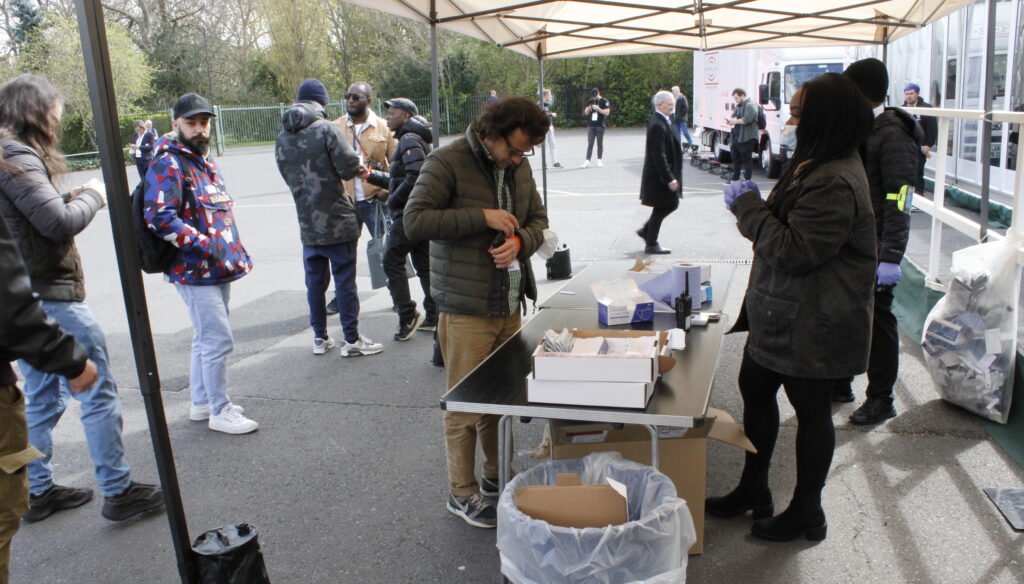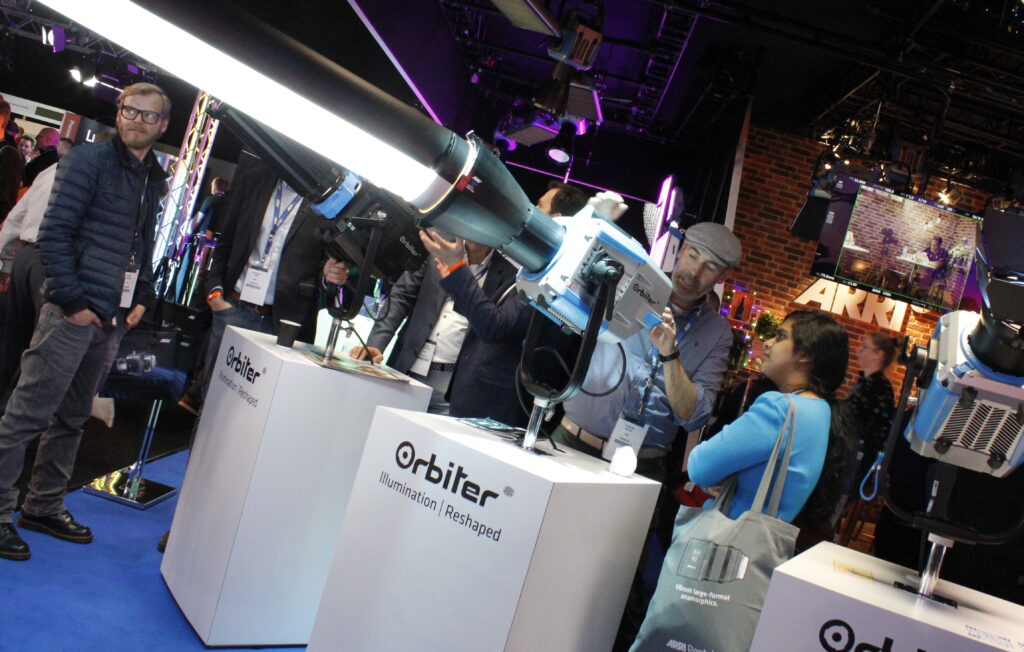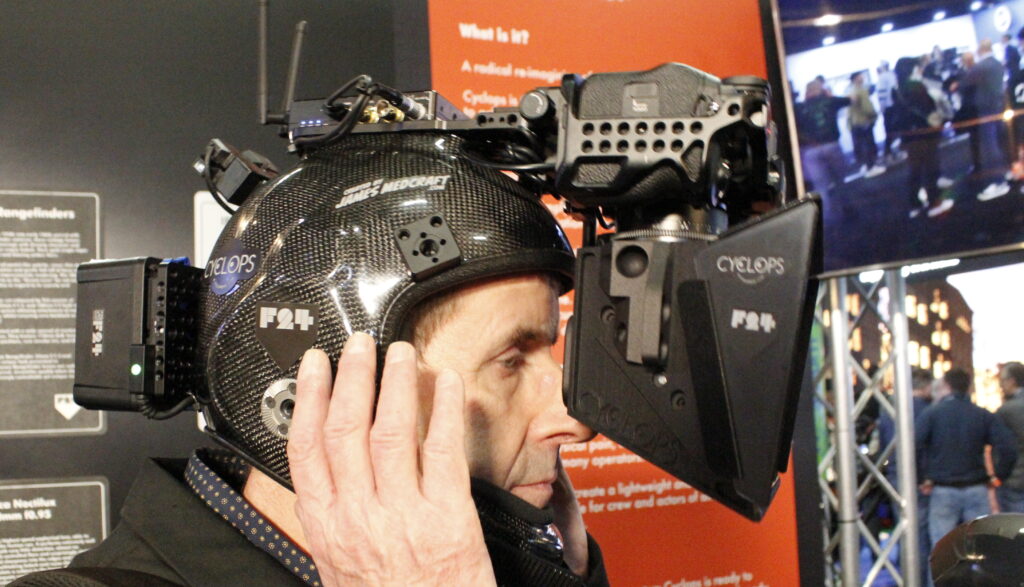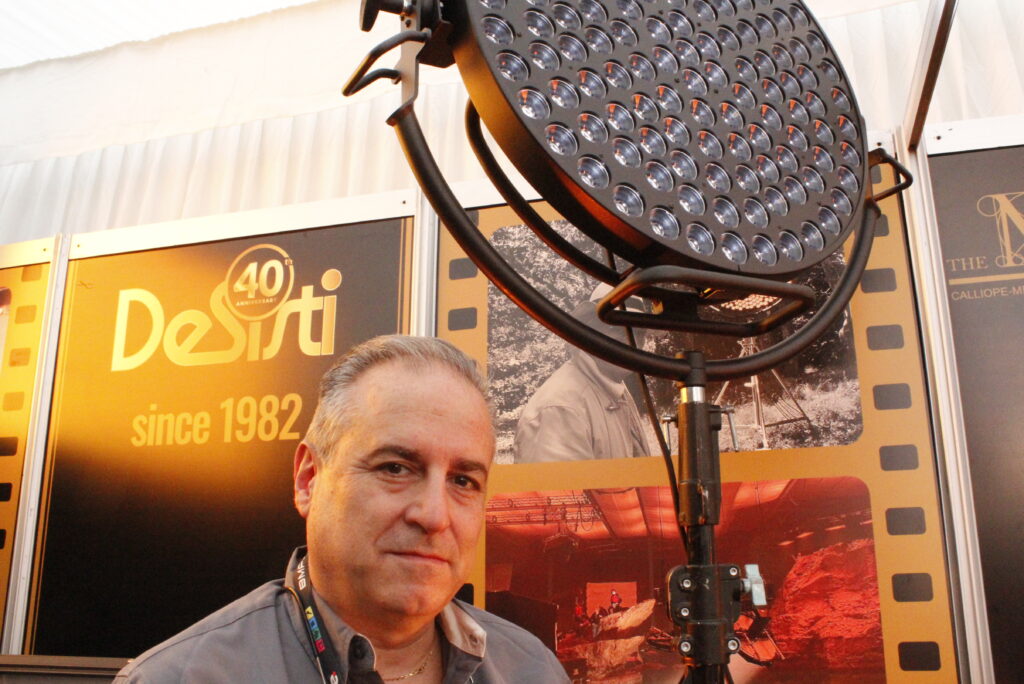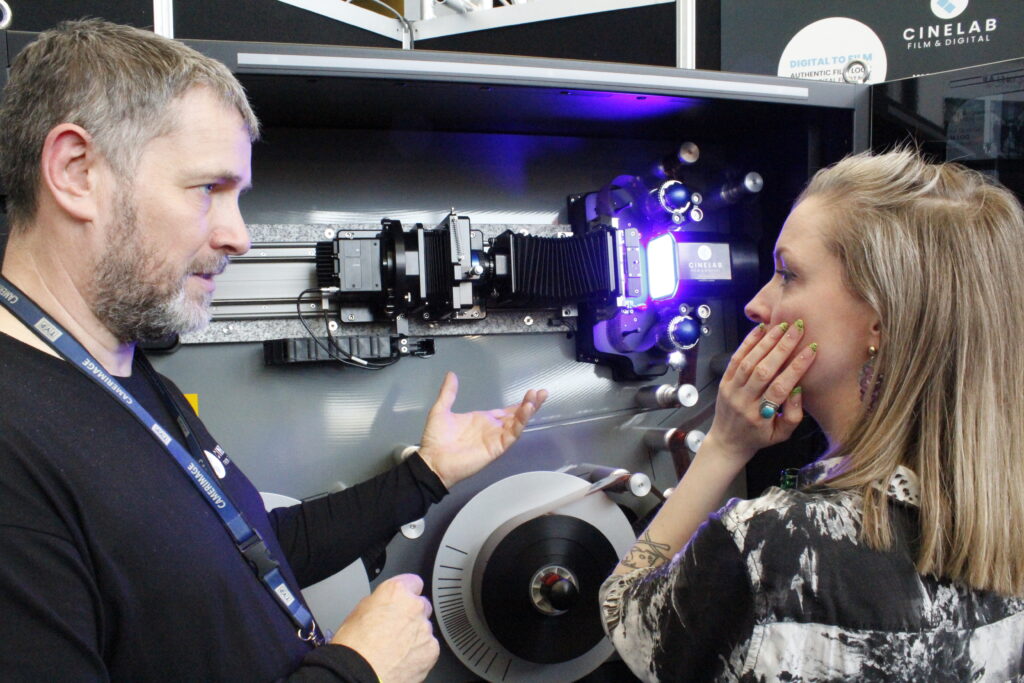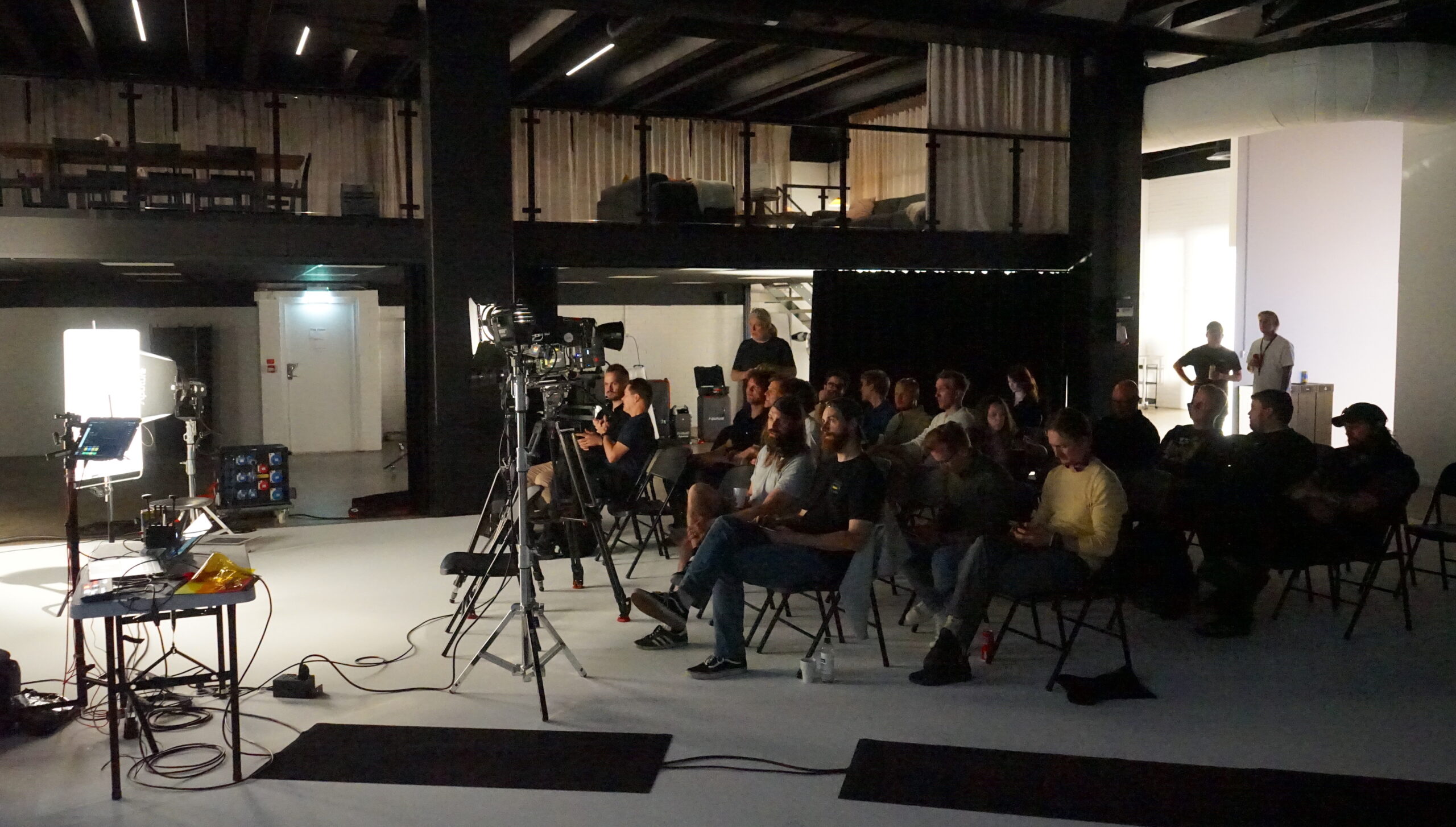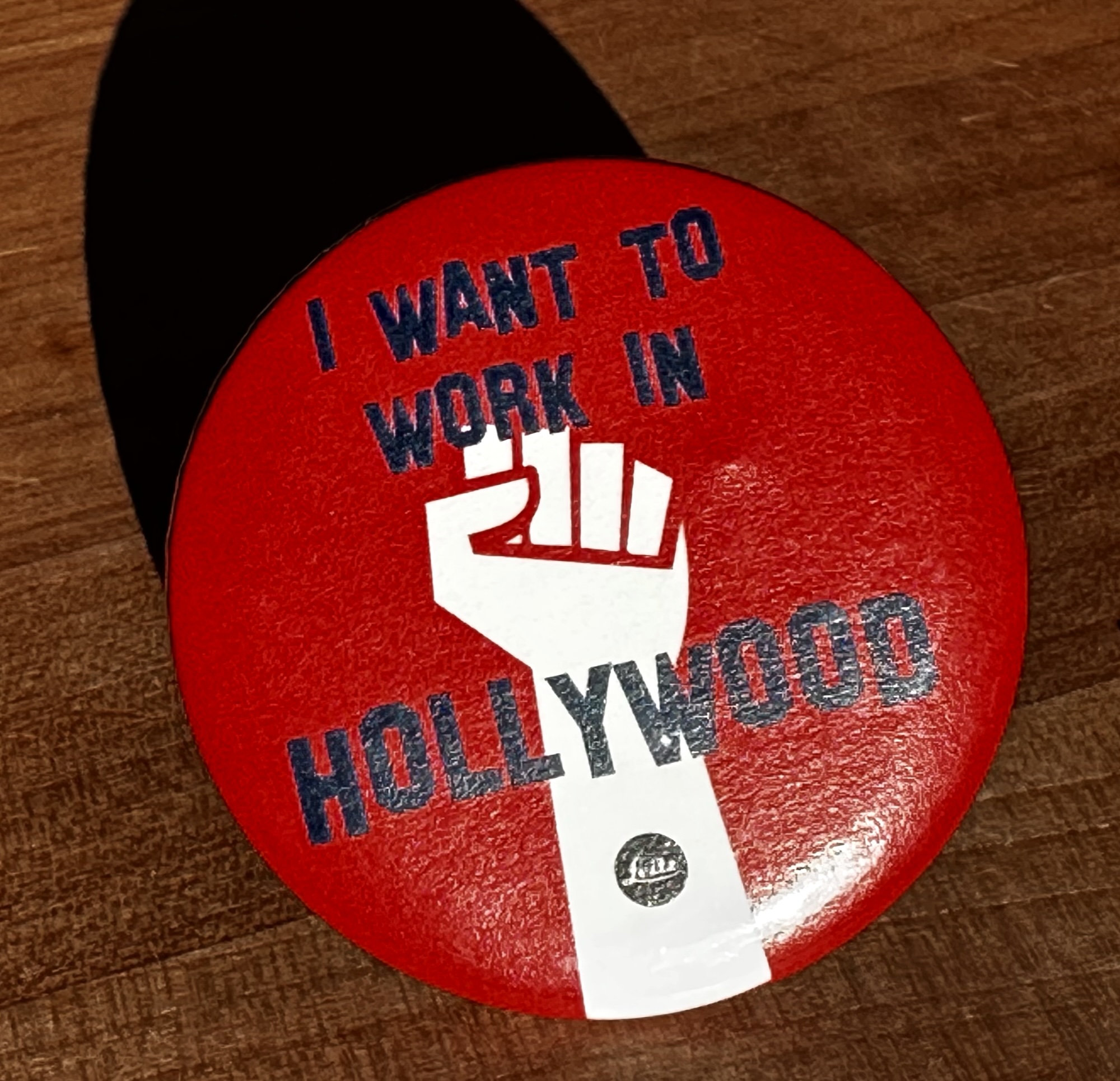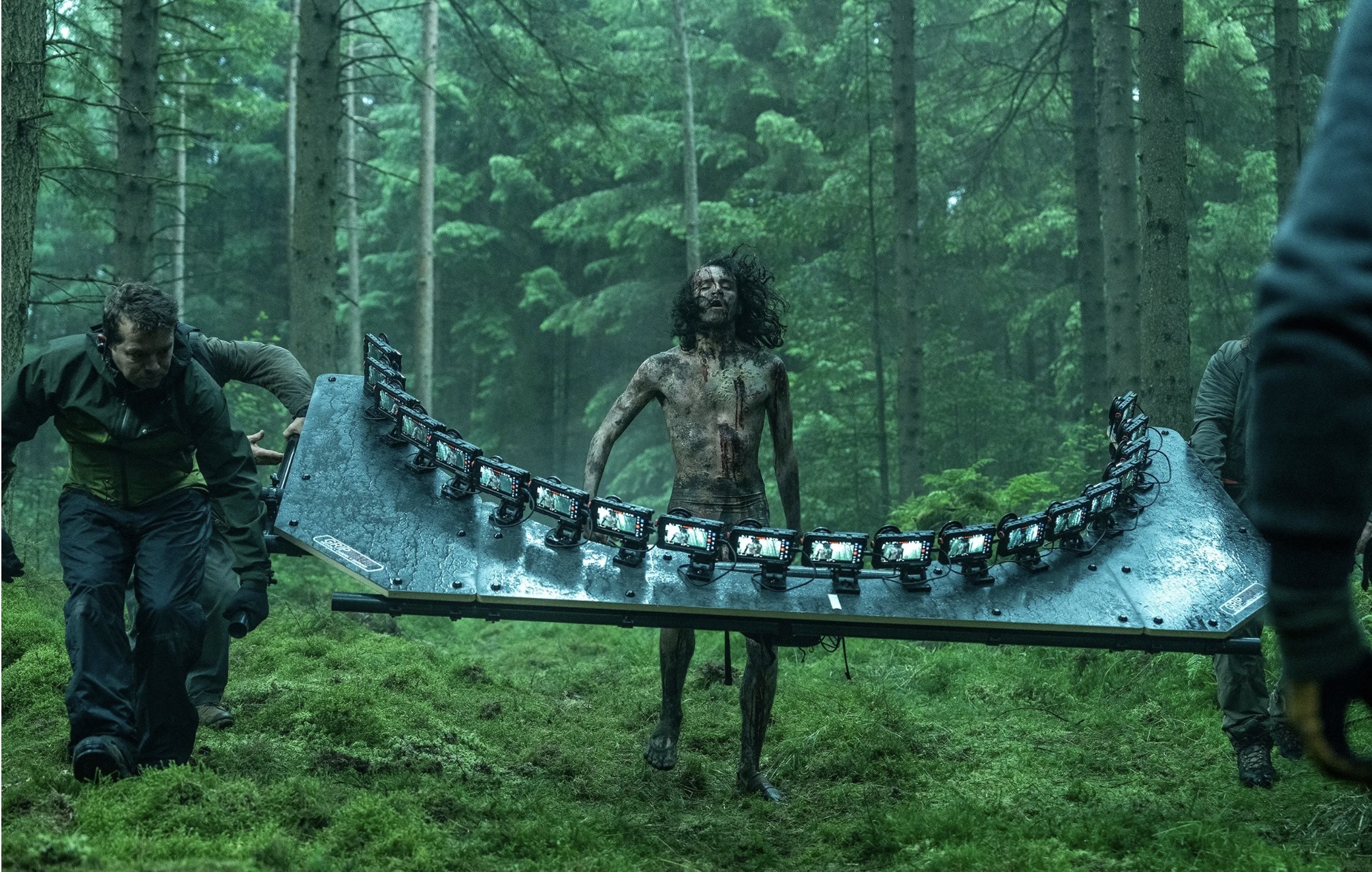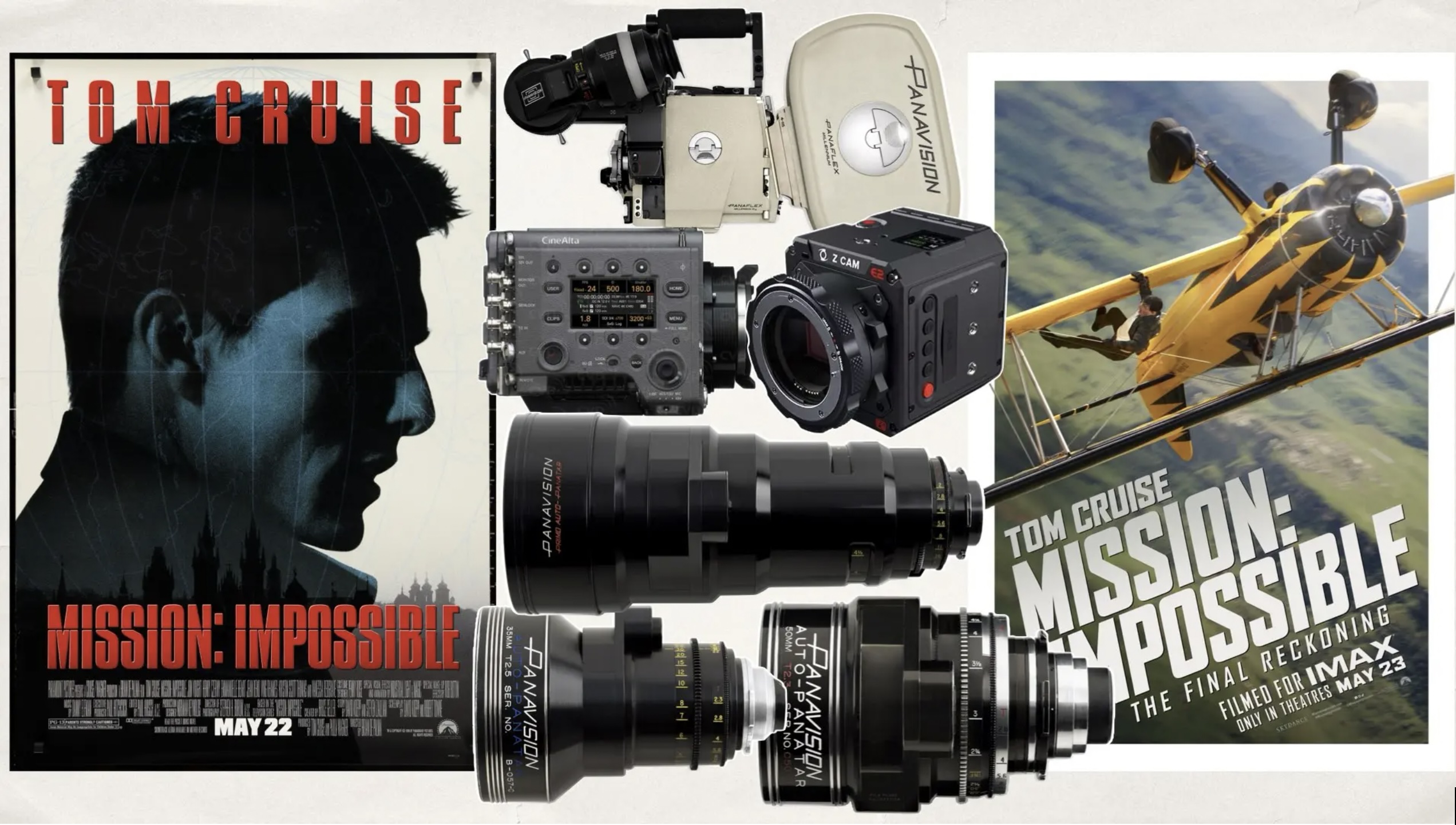The 2022 BSC Expo
Friday 8th to Saturday 9th of April, after a regrettable two-year hiatus, it was finally time again for the BSC Expo -the liveliest and most epic of European motion picture business trade shows!
Traditionally, the BSC Expo is held late January/early February, which is strategically a good time of the year for an exhibition since motion picture shoots are normally few and far between in the winter season.
But of course nothing has been particularly normal during these last two years, and in fact this trip to London is actually my first flight anywhere in that time span. The last one in mid-March 2020, a short trip to Brussels, was a thoroughly surreal experience. Upon arrival I realized I had managed to pick the very same day that world wide panic broke out over the Covid 19 Pandemic. The news broadcasts looked like something out of a science fiction movie, most of the world went into a logistical tailspin, and with flights canceled left and right I considered myself really lucky if I simply managed to fly home again without having accomplished much of anything.
But, happily, that was then, and this is now, and it’s good to be back in Battersea Park. The facilities here have been set up along the lines of the same form factor as last time, with an extra tent in front of the main building housing wardrobe and reception, as well as an additional tent in the back serving as turf for the excellent food market.
This year’s edition of the BSC Expo feels slightly toned down -in a good way! Outside the Battersea Park facilities there are no 16 wheel trucks, no Technocranes and no helicopters. Rather the first thing to catch your eye is a tent for taking Covid tests.
Safety measures to stave off Covid-19 health issues are quite ambitious here at the Expo. Everyone is required to produce a recently taken negative Covid anti-gene test, face masks are mandatory and all aisles have been widened so as to avoid crowding. Actually, the fact that the exhibition isn’t all that crowded feels like bit of a blessing when one remembers the combination-sardine-can-and-sauna-like atmosphere of the 2019 Expo, and this time around one can stroll down the aisles at leisure.
Some would disagree of course, but I think it can be said right away that there aren’t really any massively game-changing new products on display at this year’s Expo. But the general impression is, everyone is so relieved to finally be able to meet and socialize in a real world environment, that the lack of really head-turning new products on display doesn’t bother anyone. In fact, the subject pops up time and again when chatting with people here how thoroughly tired they are of Zoom meetings and communicating with their fellow human beings through keyboards and computer screens.
Another thing I notice with some sadness, is there seems to be a bit of a changing of the guards at the Expo. Some familiar faces among the veterans who you could always count on seeing here are clearly absent. Making inquiries I find out they’re alive and well, but getting on a bit in years and have therefore decided to take a rain check this time.
However, someone who has been around for a while and can be found at the Expo is Jeff Lawrence in the Ronford-Baker booth, as reliable and cheerful as his camera supports are sturdy. In fact, among experienced visitors, the booth is often used as a rendezvous point; ”let’s meet in half an hour in the Ronford-Baker booth”.
There has been some buzz going around that ARRI were going to release a new camera at the Expo, so I head right away to the ARRI booth to see for myself, but find it loaded with Orbiter lamps fitted out with an assortment of new accessories. The most interesting ones I found to be the ”bag-of-light”, an inflatable two metres long soft box of light which attaches to the 15° open face optic of the Orbiter. This is the ideal tool for close quarters where you want soft wraparound light.
Arri also showcase here a projection lens system for the Orbiter, allowing you to, for instance, give the impression of light through Venetian blinds or projecting other patterns on a wall. There are also several large soft boxes that can be fitted to the Orbiter.
I try to make inquiries about the new camera but the ARRI representatives are reticent to give any details, their lips are clearly sealed on this subject. There definitely is a new camera in the works, but when it will be released has yet to be confirmed.
Besides ARRI, several manufacturers at the Expo offer interesting new LED fixtures producing hard directional light. Up until now LED fixtures have traditionally been soft light sources, so this is a much appreciated addition to the cinematographer’s tool kit, so to speak.
Of course, one of the key features of LED lights which cinematographers have welcomed with open arms is the ability to dial in very exact colour temperatures on the lamps directly, down to a precision you could not hope to attain through the traditional method of adding coloured gels to the lamps.
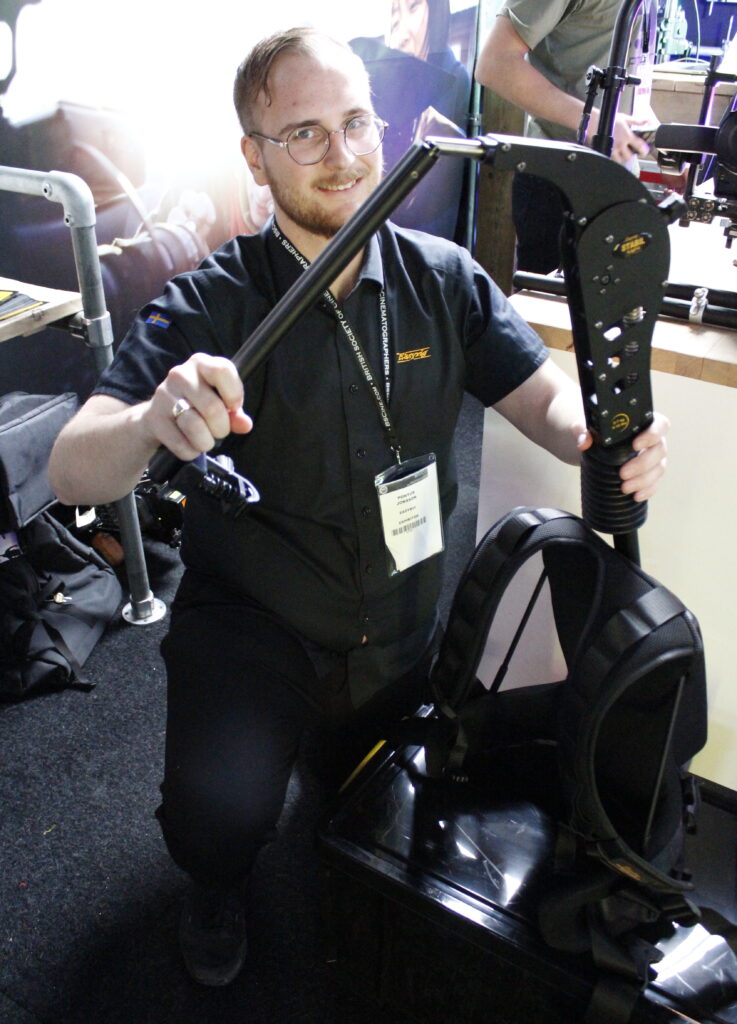
Continuing on the subject of camera support, Swedish company Easyrig offer a nice addition to their portfolio: The Stabil Light, and their representative Pontus Jonsson demonstrates it to me. It’s an accessory to the Minimax Power Pack which supports cameras between two and seven kilos and it’s aimed at shooters using a gimbal. But the biggest advantage to this particular Easyrig is that you can collapse it in seconds -without tools- to a size small enough to pass as carry on luggage on an airplane! I can see this one becoming very popular with shooters out there!
A really interesting side effect to this year’s Expo being held in April, is the fact that we are closer to spring than to winter, and this gives us an extra perk, as the weather is beautiful and you can pop outside for a while to bask in the warm spring sunshine. A lot of us visitors capitalize on this advantage.
Back in the exhibition again, the company Focus24 demonstrate a really interesting helmet camera in their booth. It’s a helmet point-of-view rig, and it’s constructed in a way similar to a Teleprompter, so that both the camera and the operator are looking through a two-way mirror, ensuring that both have exactly the same view. There are obvious advantages to this compared to traditional helmet cameras. In the case of a camera mounted on top of a helmet, the actor has to look at the camera and has no eye contact with the operator and similar problems arise with other helmet-mounted camera configurations. But with this rig what you see is truly what you get as an operator. Judging by the way visitors flock around the Focus24 booth, this new helmet camera clearly attracts a lot of attention here, and can truly be said to be a bit of a game changer in this special niche of cinematography.
Some of the finest Motion picture professionals in the world -and indeed any movie buff will tell you some of the best films in cinema history! -all come from Italy. And since the BSC Expo is an international event, here to represent the Italian film industry is Fabio De Sisti and his staff from De Sisti Lighting. Two years ago Fabio told us about a new range of LED based lights, appetizingly named ”Muses of Light”, they were developing in collaboration with legendary Italian DoP Vittorio Storaro AIC ASC. At that point the lights were not yet finished products ready to be shipped, but at this year’s Expo they are indeed a reality!
The ”Muses of Light” are intended as a viable alternative to HMI lights for on-location motion picture production. They all come in various geometrical shapes and each one of them is named after a classical muse -what’s not to like about that!
At the 2019 Expo there were quite a few traditional 35mm film cameras placed throughout the exhibition, but this time around I spotted only one, an ARRI 435 Extreme tucked away in the corner of a booth. Chatting with the representative next to the 435 I remarked there were so few analogue cameras around and he informed me ”they’re all out on productions”. Comforting words to an old film buff.
The notion of a lot of productions actually shooting film out there prompts me to check on how Kodak and Cinelab are doing. First stop is Sam Clarke in the Kodak Booth, and the fact that the booth is really big this year is a good sign! ”Things are really buoyant at the moment”, Sam Clarke informs us, ”lots of 16 and 35 mm shoots in fashion, commercials and TV. The pandemic was a tough period for everyone but we came through and business is good now”.
I mentioned earlier that there aren’t really that many game-changing products on display at this year’s Expo, but with a maximum scanning capacity of a whopping 28K(!) per frame, the OXScan 65mm scanner in the Cinelab booth must rate as a head-turning new product.
Cinelab CEO Adrian Bull is clearly really pleased to be able to demonstrate this new scanner. ”We have been processing 65 mm film since 2016”, he explains. ”The first one was ”Murder on the orient express” directed by Kenneth Branagh and the most recent one was ”No Time to die”, the latest James Bond film, on which they shot 300,000 feet of 65 mm film.
One of the challenges we’ve had in Europe when dealing with 65 mm film is that we haven’t had a proper scanning facility here so all the features that have been shot on 65 mm film over here in the last five or six years have all had to send the footage to Los Angeles for final scanning. But now with the OXScan 65mm scanner we have this capability. This is a scanner made by DFT Gmbh renowned for making the Spirit scanners through the 90s and 2000s, and it really is the pinnacle in 65 mm scanning right now. It has a maximum scanning capacity of 28K per frame in IMAX.
On a standard five perf Todd AO-frame we’re talking 12K. We’re scanning about 100 million pixels per frame(!). It’s a significant jump up from 4K. Smaller formats really struggle to keep up with 65 mm”.
The idea behind the OXScan is for clients to be able to scan the material once, at the highest resolution possible, while simultaneously receiving multiple secondary outputs (HD, 2K, 4K etc) for easy access and monetization.
”During the pandemic we had periods when long format projects we’re not shooting at all”, Adrian continues, ”but in spite of that our processing volumes remained pretty much level, and now once the lockdown was finished everyone came back with a vengeance! Our last quarter in 2021 was the busiest we’ve had bar none in the nine years that Cinelab has been operating. It’s a clear indicator film is going to be around for a long time, and we’re really pleased to have a lot of Scandinavian cinematographers shooting on film”, Adrian smiles.
”One interesting thing that has become popular”, he adds, ”and we do a lot of on our low budget projects where they couldn’t afford to shoot on film but they still want the look, is we take the digital footage and shoot it out as 4 super-16 frames within a single super 35 mm frame. We then process and scan the 35 mm film and you end up with footage that looks really close to having been shot on film to begin with. The fact that we can fit four frames within one frame of 35 makes it an inexpensive option for these filmmakers”.
The clock strikes five and that’s when the BSC Expo wraps on Saturday. A feverish activity breaks out all around us as a surrealistic spectacle of men, women and even teenagers unfolds, tearing down the exhibition at break-neck speed. I am grateful to be able to simply walk past the huge caravan of trucks waiting outside, realizing that many grueling hours of work await those who have to vacate the massive Battersea Evolution building before the 2022 BSC Expo is truly a definitive wrap.
Lars Pettersson FSF
